The local museums always tell fascinating stories. We have vacationed many times in this resort and I had never taken the time to go inside its Museum.
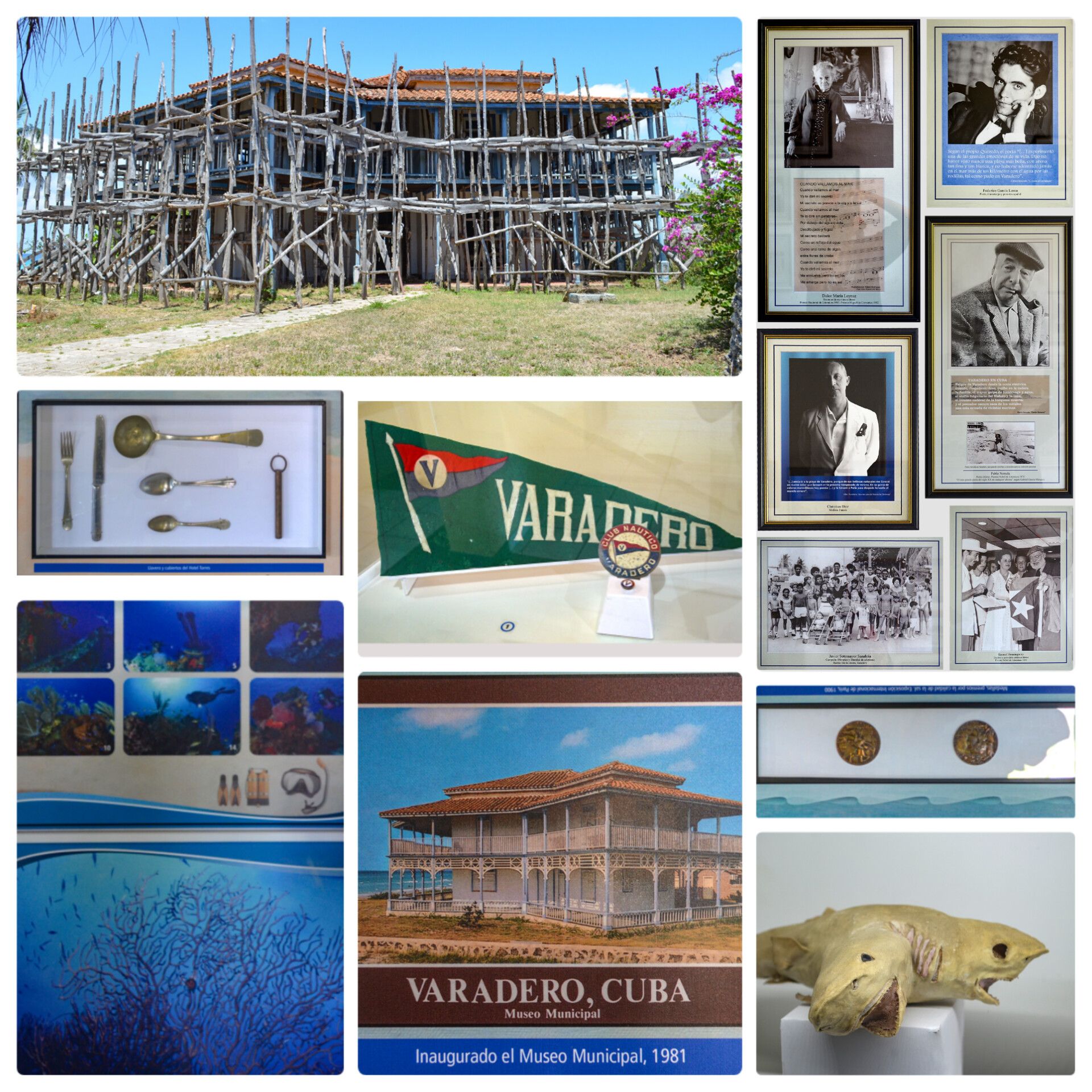
Last year I made a publication talking about the wooden houses of Varadero. In it I commented that I had missed one of them, the one that housed the Museum. It was really sad to discover this year that the house is totally destroyed and abandoned. I only found a pile of wood propping up the structure so that it would not collapse. They say there mis a plan to rescue this architectural heritage, hopefully and it is real 😔. It's a shame that it will be lost forever.
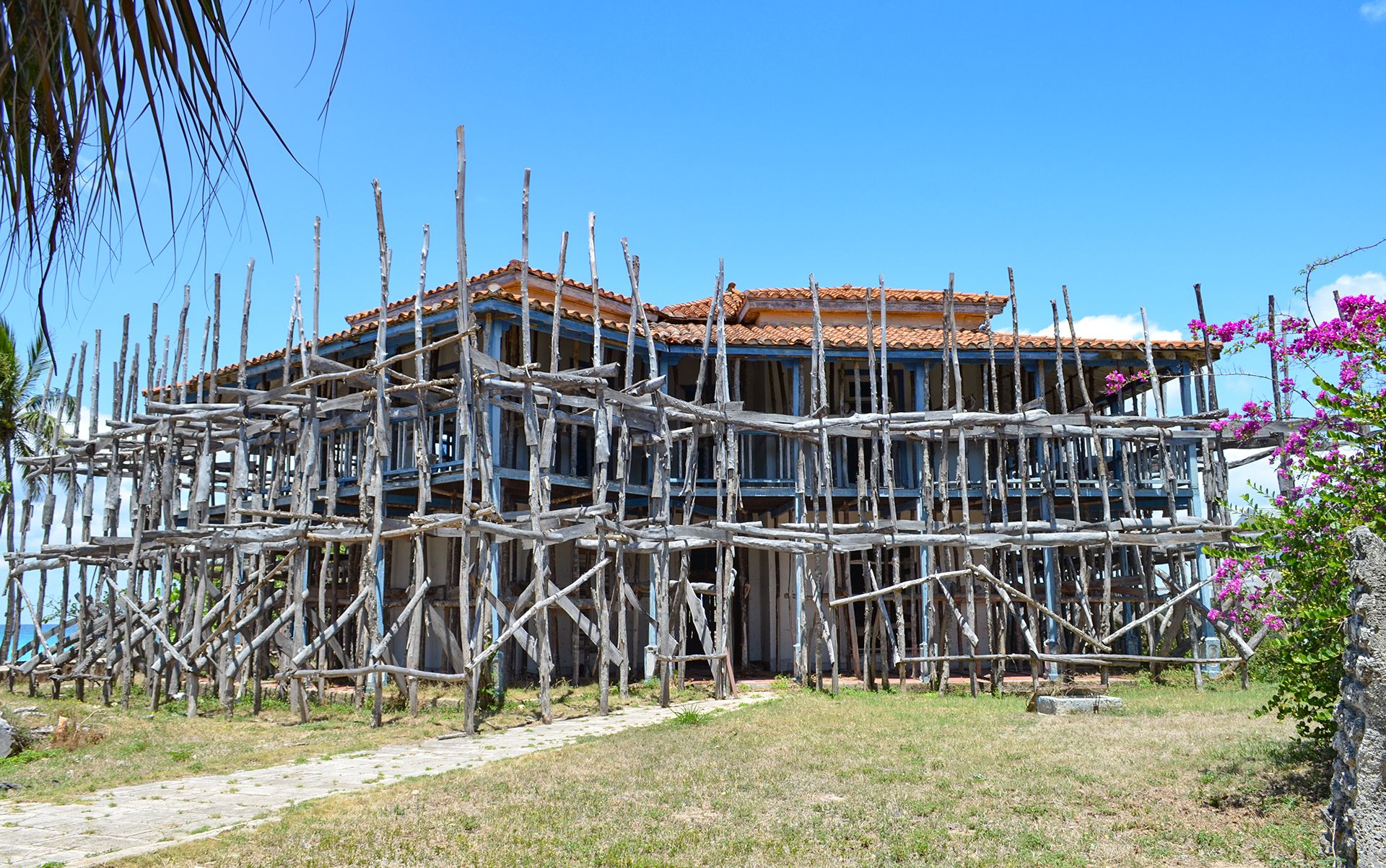
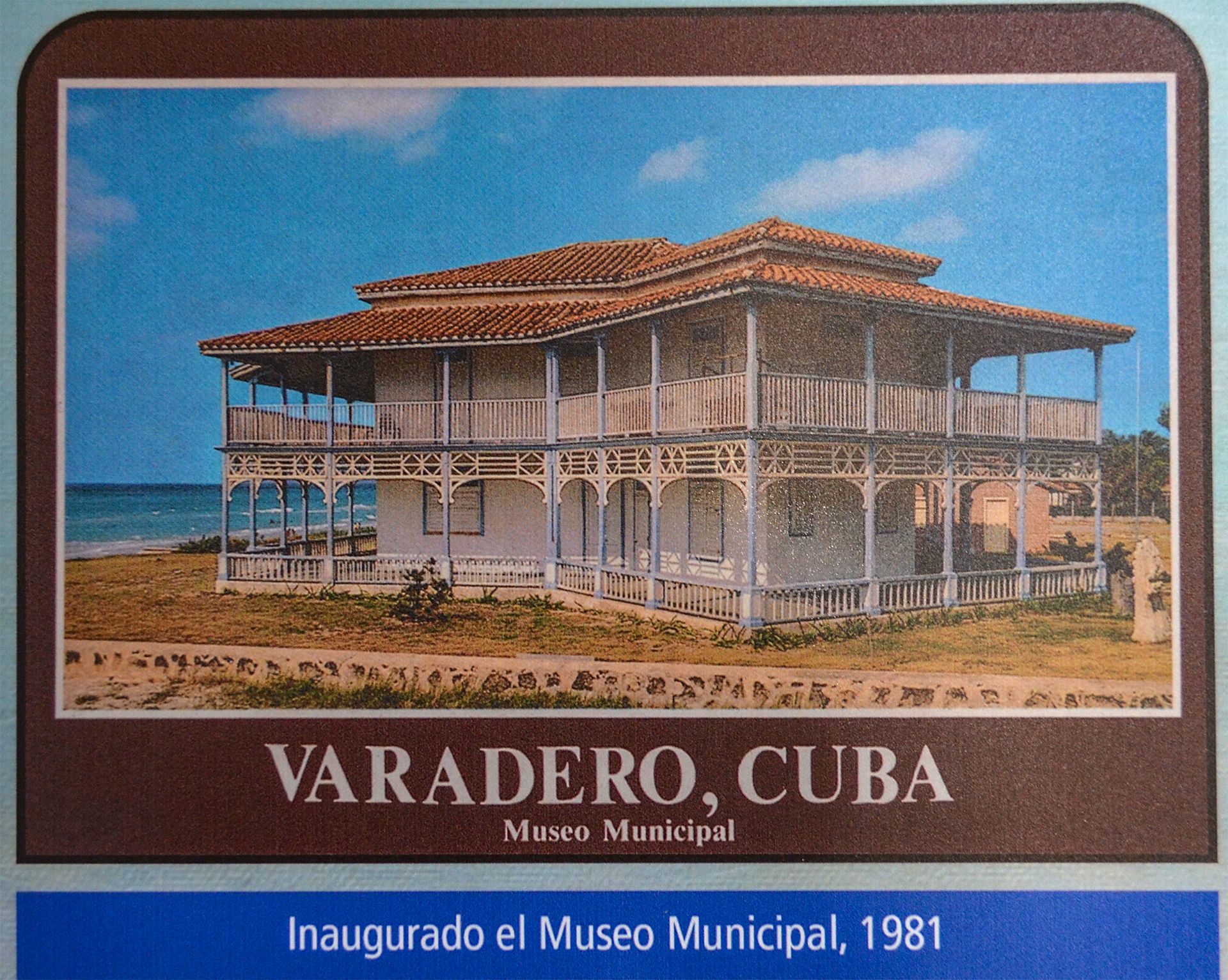
However, the museological pieces that were in this place were moved to another building. To there I directed my steps in search of the history of this town. The payment for a guided tour was ridiculous, for only 15 CUP (0.03 USD) I had a very friendly and knowledgeable guide.
My first surprise was to learn that the initial economic activity carried out in this peninsula was salt extraction. Since as early as the 16th and 17th centuries it has been successfully developed. Medals from the Paris World Exposition of 1900 come to light. They were awarded as a prize for the quality of the salt from the salt pans located here. Where the salt pans were for centuries today a hotel stands, nearby, the guide tells me there is a wonder of nature that luckily survived the construction works. That one too deserves my visit...and yours.
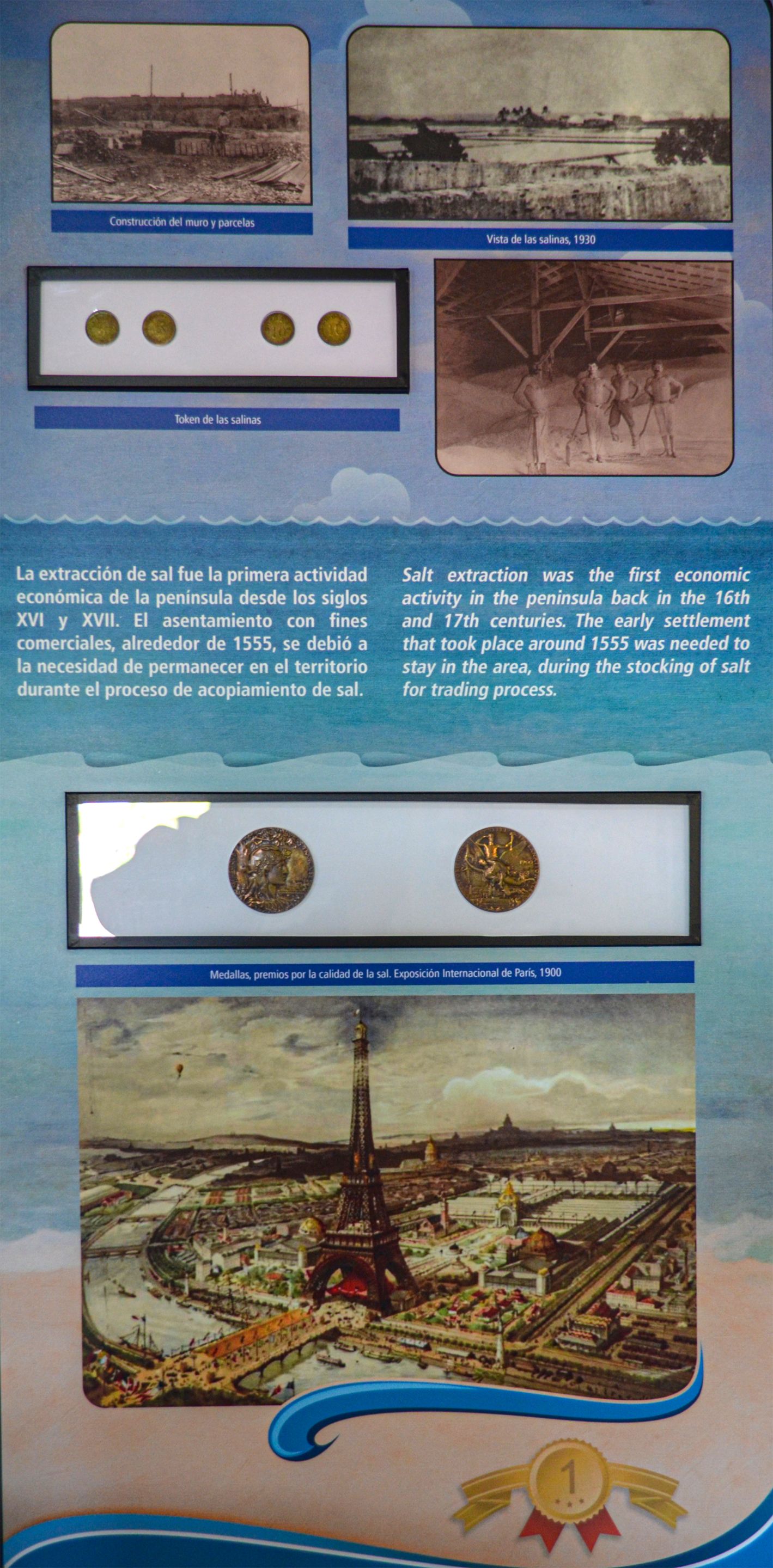
The creation of a settlement for recreational purposes did not become a reality until the middle of the 19th century, after several unsuccessful attempts due to difficult access conditions, mosquitoes and hurricanes that hit the area. In 1883 a man from Cardenas named Torres Armengol inaugurated a kiosk for the sale of food that by 1988 became an inn and finally, the "Hotel Torres", the first in the resort. This was the beginning of what would become the tourist development of the place. Some elements that belonged to that building are exhibited as relics in the showcases of this Museum. Unfortunately, the hotel was demolished in 1971.
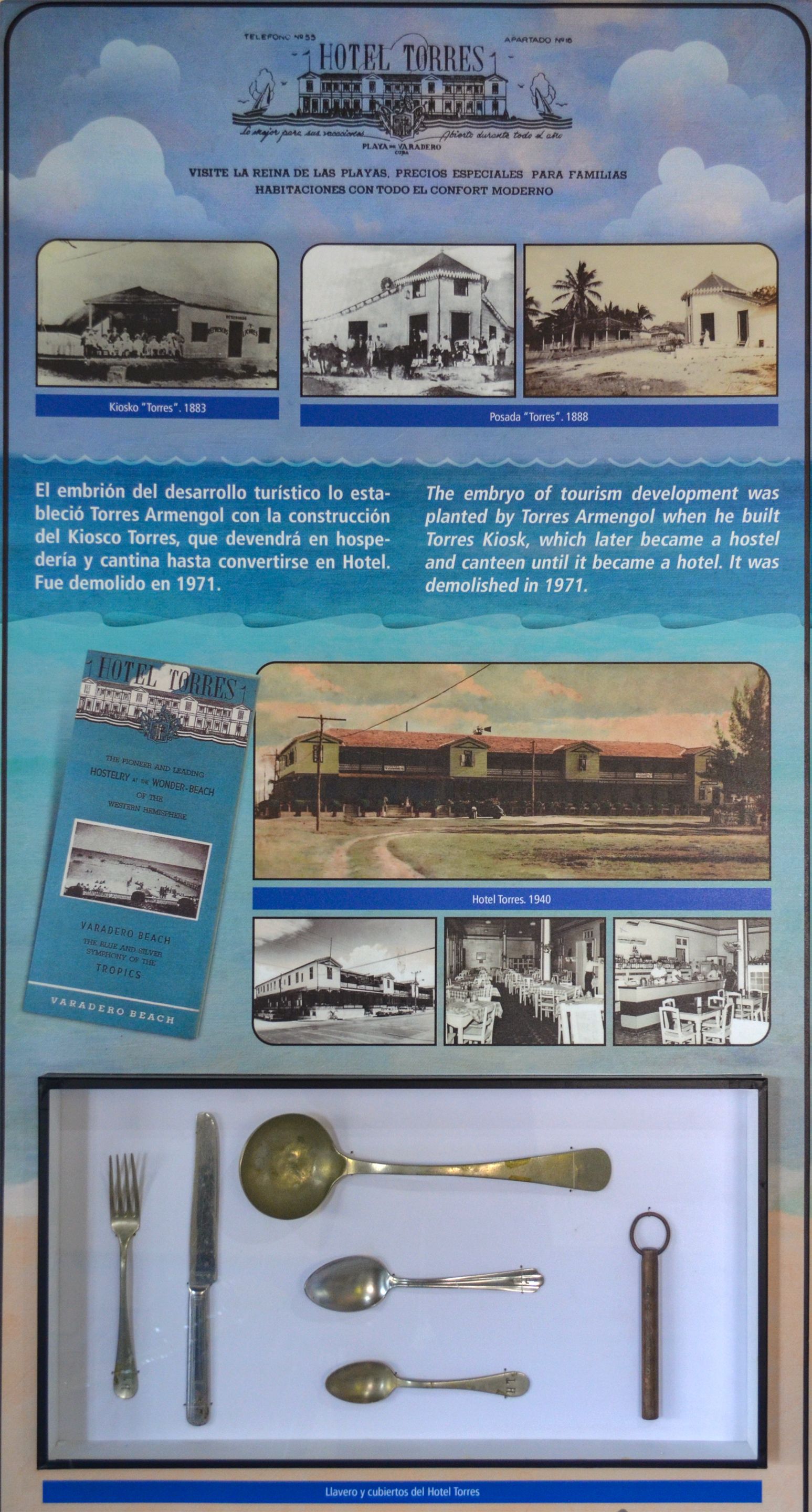
A well-developed settlement already existed in Varadero when the resort was officially founded in 1887. A small group of families of the Cardenas bourgeoisie were the promoters of that event. A plaque commemorating the event is located here.
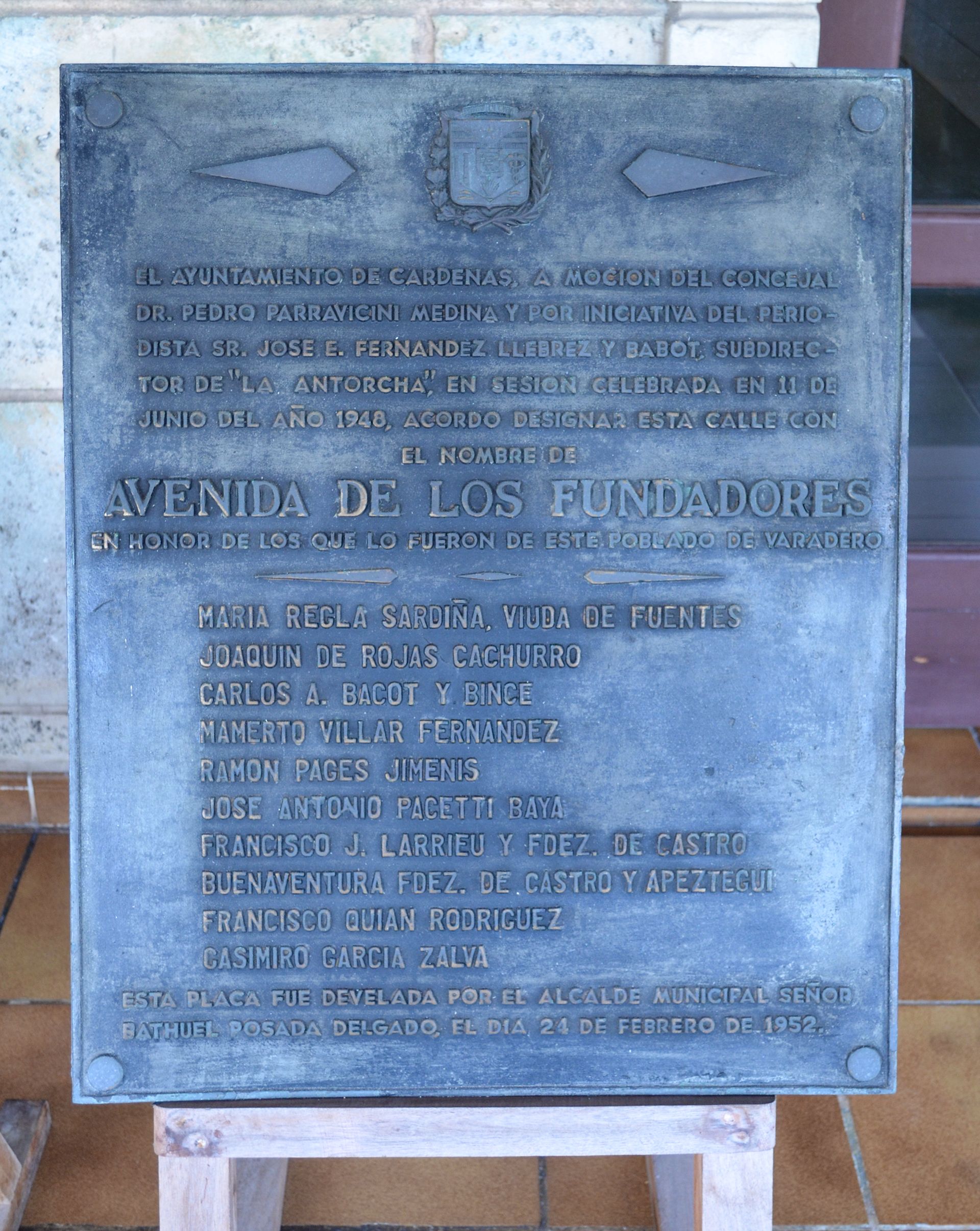
It did not take long for the beauty of these waters to transcend borders and capture the interest of foreign businessmen. At the beginning of the XX century some North Americans, due to the link that at that time both countries had, saw the potentialities that the place offered and made of the tourist development a lucrative business. Thus, the land of this peninsula was parceled and sold piece by piece. One of the biggest investors in these lands was the North American Irénee du Pont de Nemours, who came to own a large part of it. To him we owe great works that are still preserved and that greatly facilitated the lives of the locals, but that is another topic, now we will continue touring this small museum.
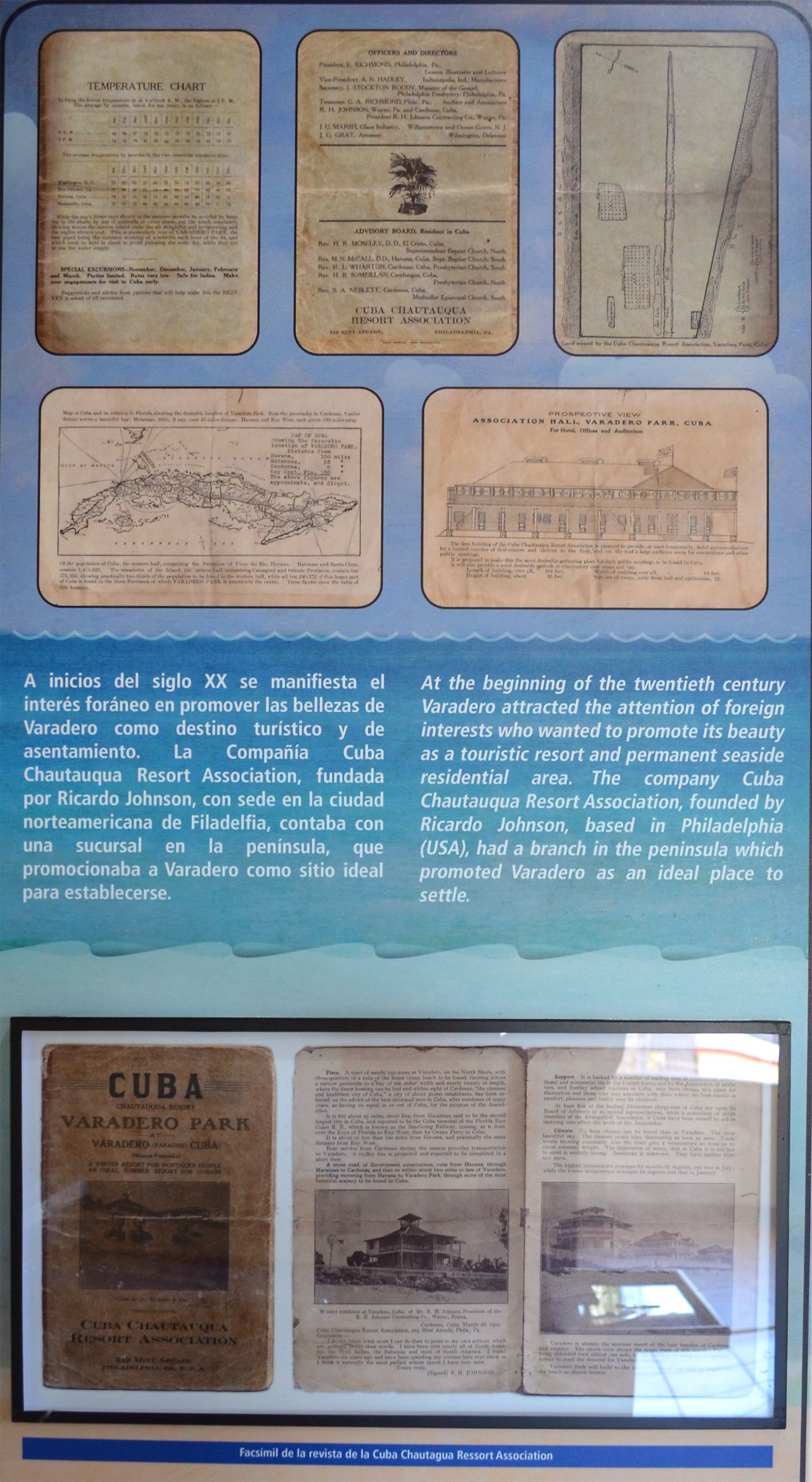
It is with great pride that we
treasure articles referring
to the Varadero Rowing Regatta.
It was a multitudinous and transcendental sporting event. At one time or another it was even attended by the President of the Republic himself.
Its celebration contributed considerably to the economic development of this enclave. They are still celebrated, but nothing to do with the importance and opulence of yesteryear.
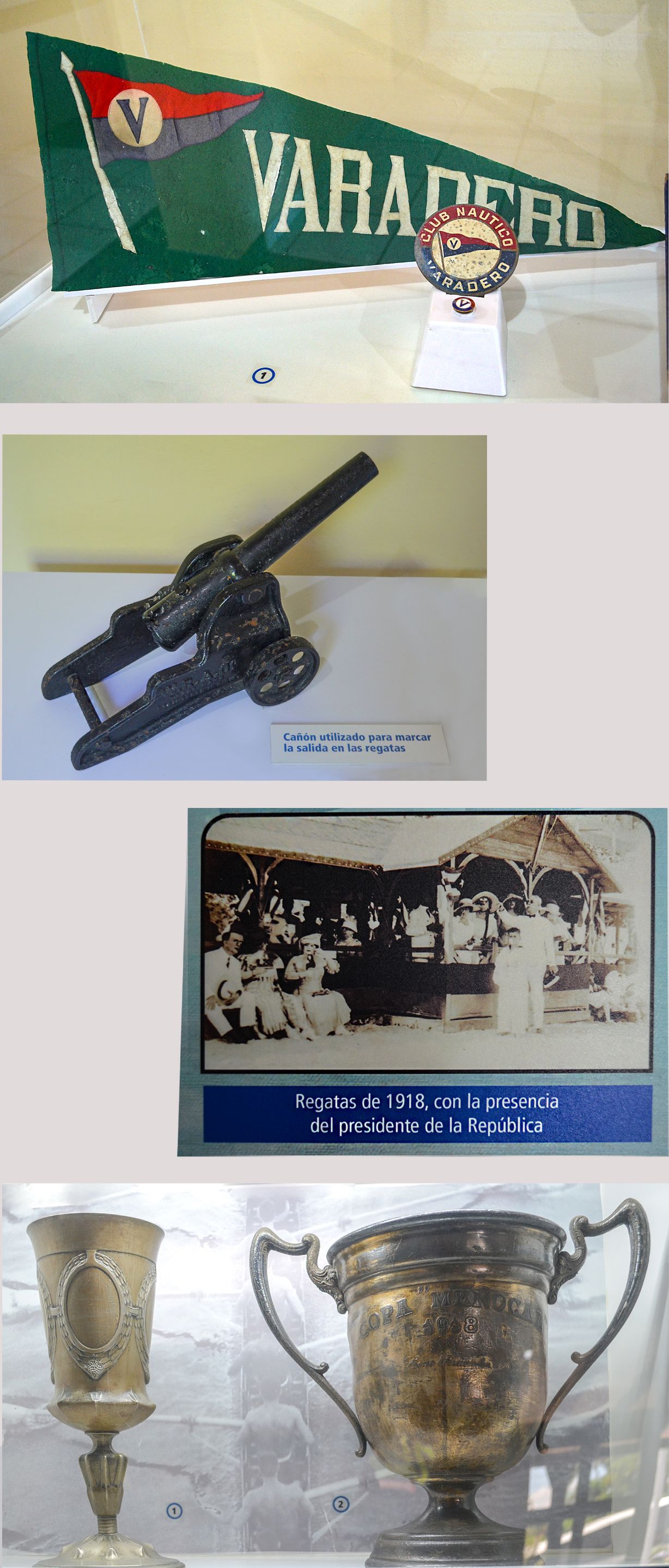
An interactive screen adorns one of the walls of the enclosure. It shows the hotel development over the years. All the hotels that have been built and even those that are under construction and some areas that are being studied for future exploitation. Hopefully all this "development" will not bring more harm than good for a peninsula, which without a doubt, its more than 20 km of beach are a gift of nature.
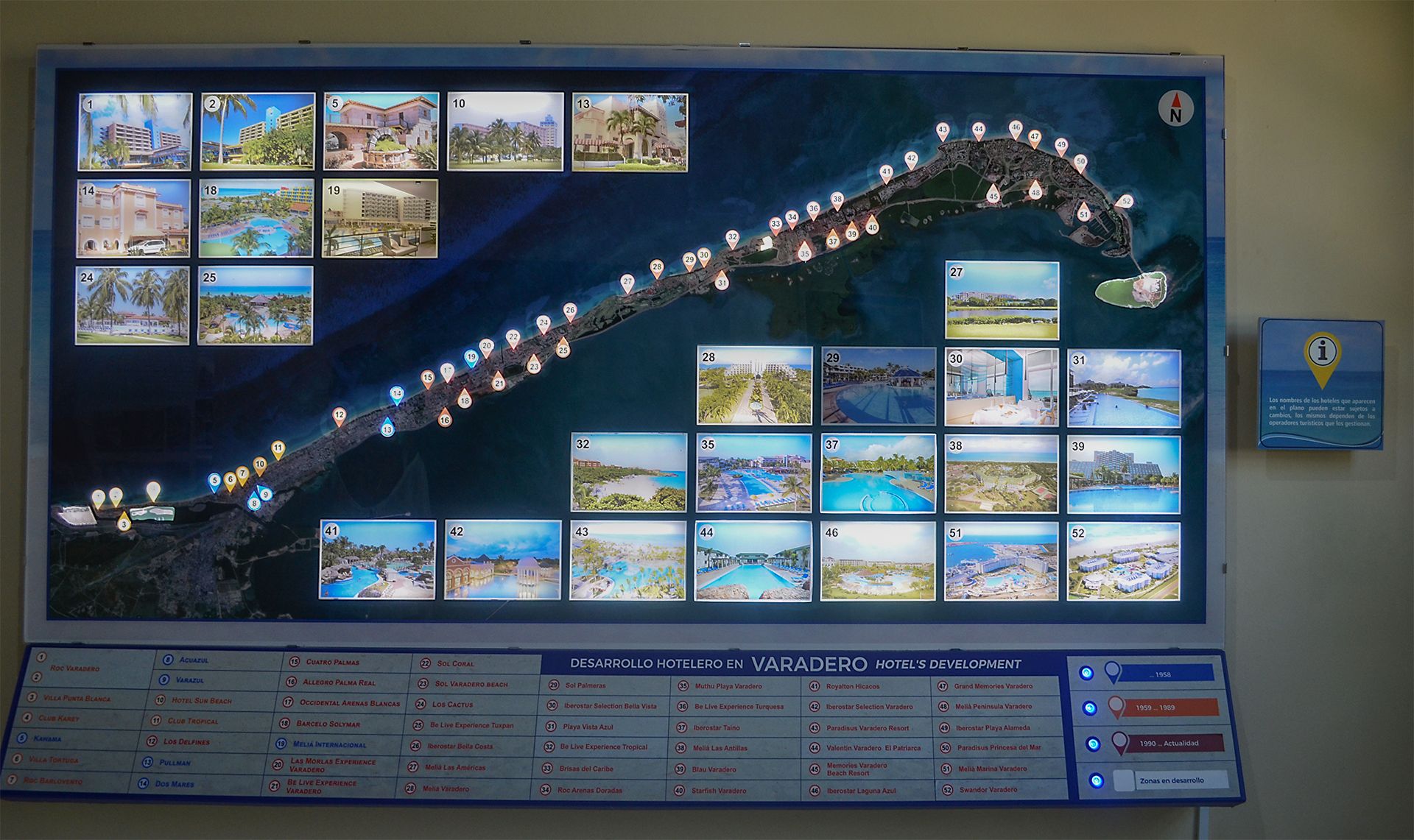
The museum also exhibits images of events that took place in the peninsula that are related to our wars of independence and the revolutionary period. It illustrates the life of the locals, their relationship with the sea, their craft and artistic traditions. It shows distinctive elements of its nature. Beautiful underwater landscapes (I think I won't go there 😜), caves and trails.
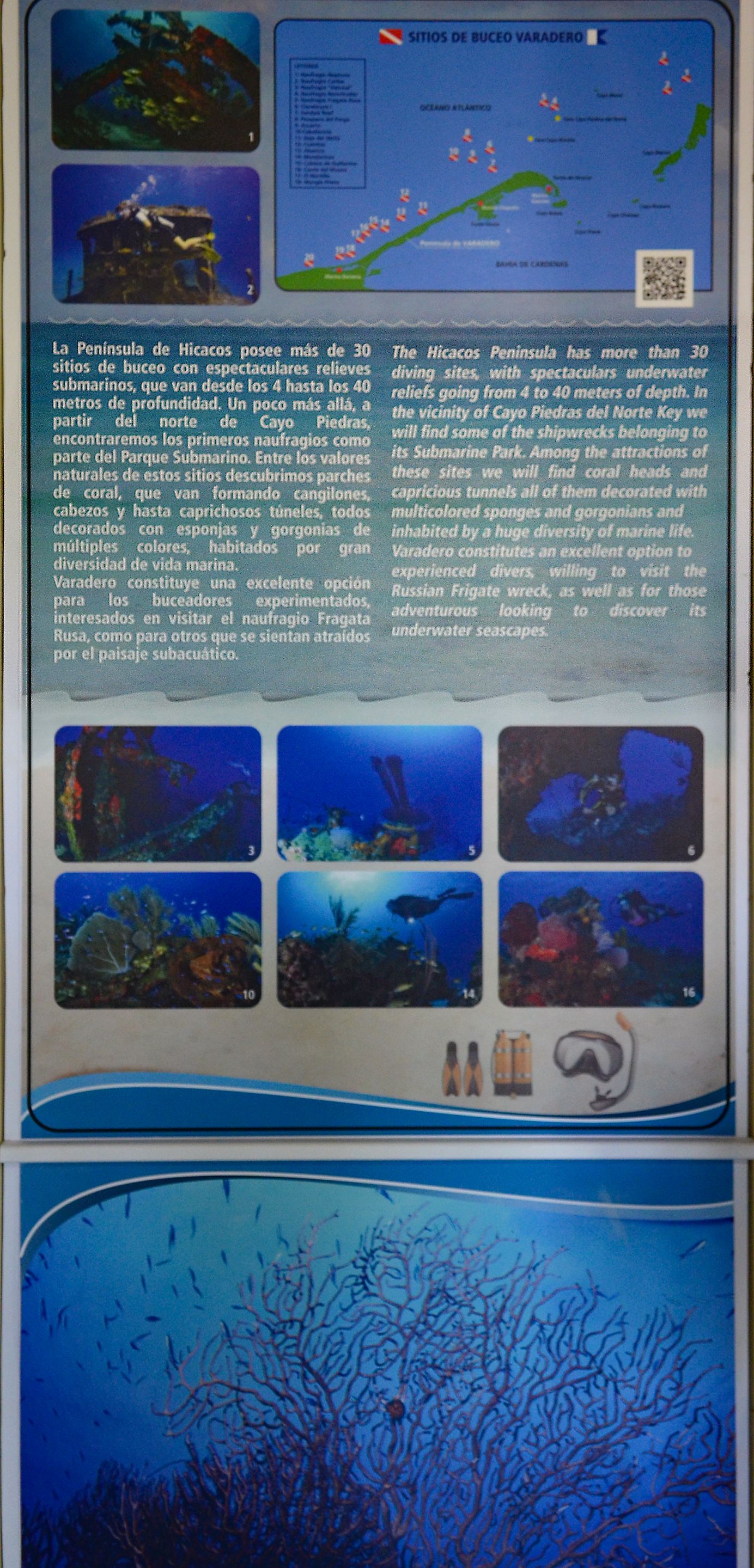
Many personalities have visited this paradisiacal destination. Foreigners and Cubans, internationally renowned figures who have expressed their admiration for the beauty of these beaches. Their photos also adorn the walls of this space, as irrefutable proof of these events.
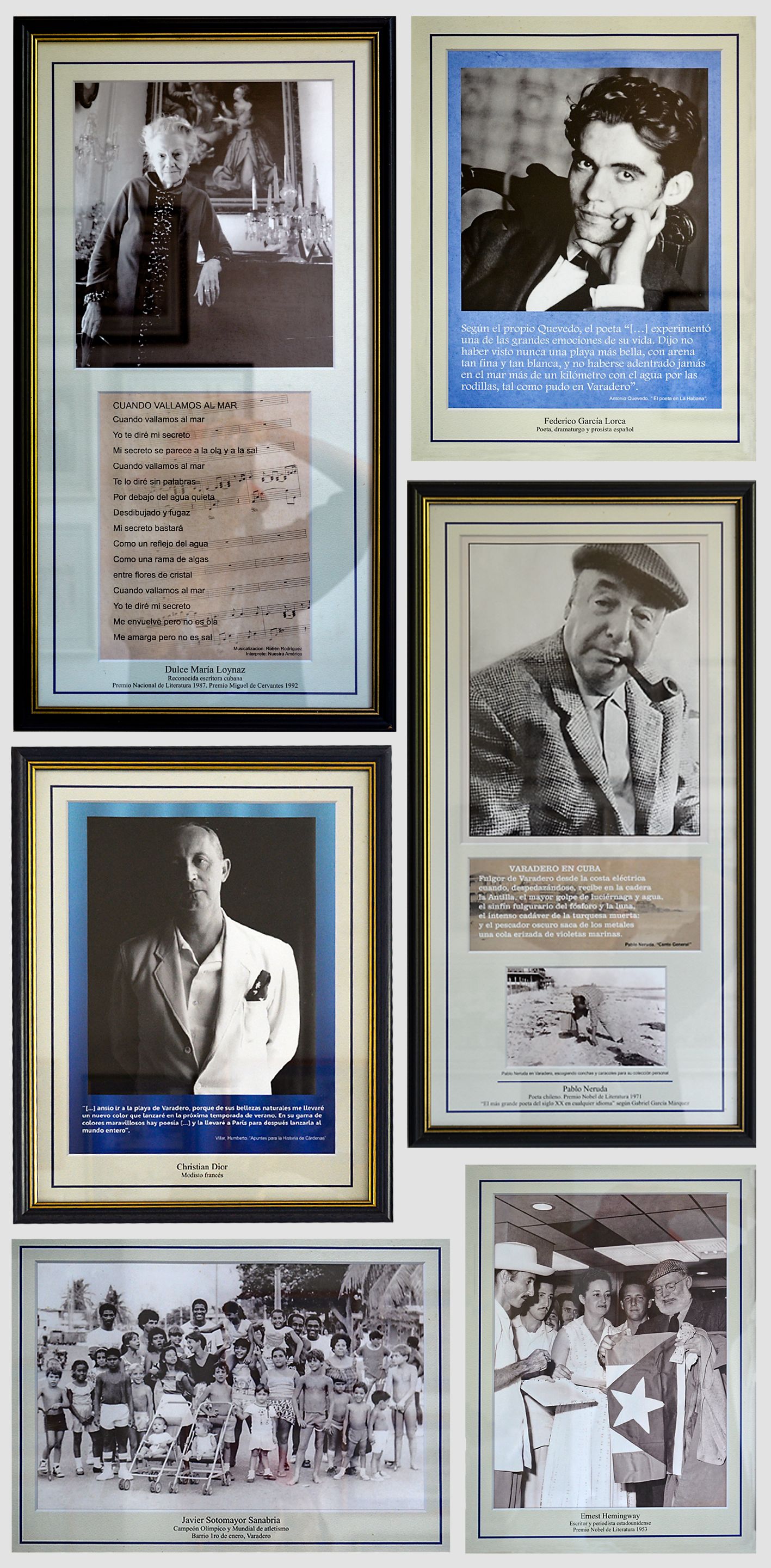
At the end of the tour, something a little creepy awaited me. Rare specimens of marine species that have been found in its waters and preserved for exhibition here. A notable example is this shark specimen with 2 heads 😬.
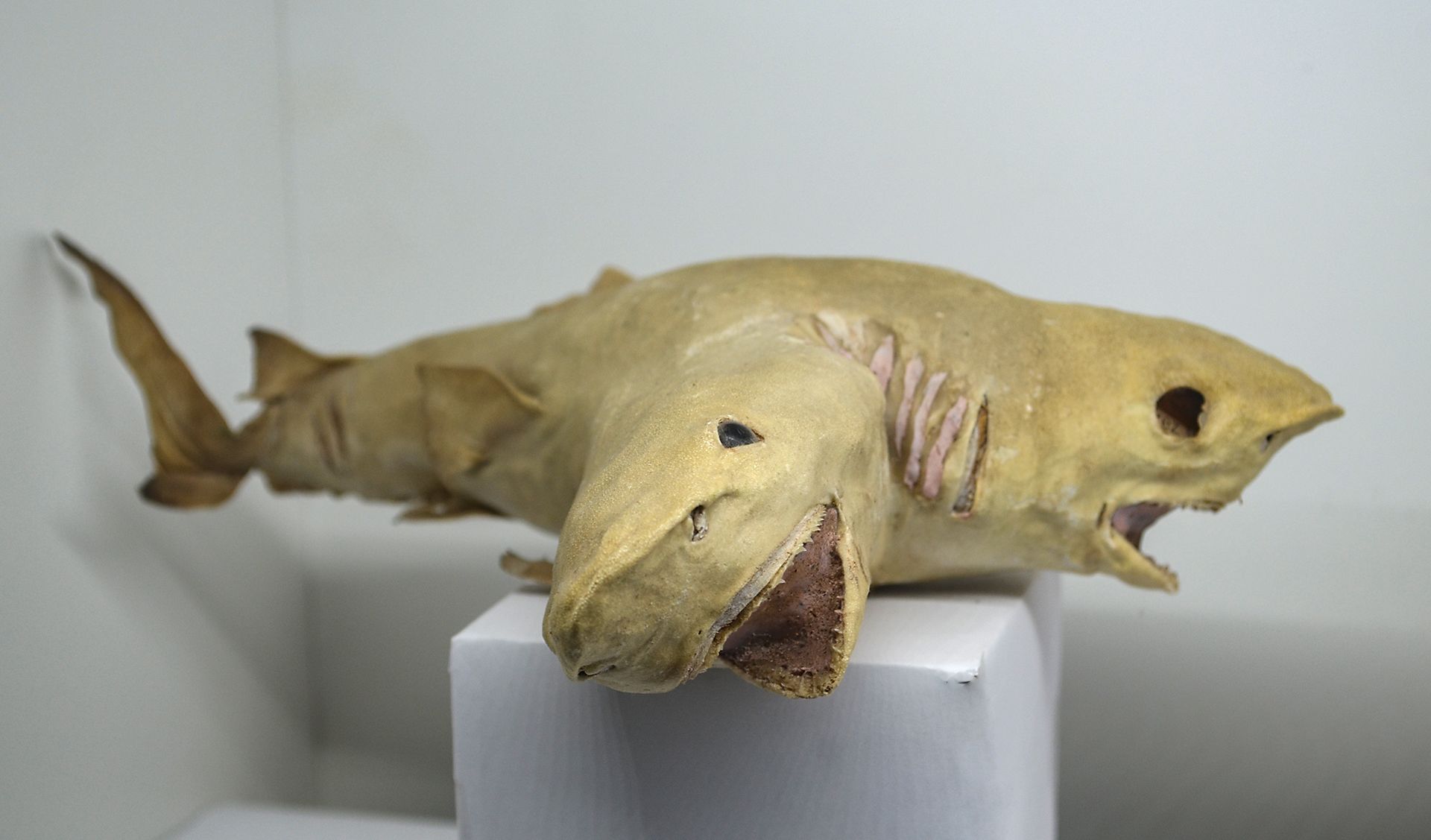
This small space and the guide who accompanied me, showed me that Varadero is more than its beach. There are lots of places to know, so this will be the first of a series of publications that I will bring for you "Wonders of the Hicacos Peninsula", that's how it will be called. Stay tuned, don't miss them!
Museo local de Varadero
Los museos locales siempre cuentan historias fascinantes. Hemos estado muchas veces de vacaciones en este balneario y nunca me había tomado el tiempo de entrar a su Museo. El año pasado hice una [publicación](https://peakd.com/hive-178708/@mdrguez/witnesses-of-time) hablando sobre las casas de madera de Varadero. En ella comenté que me había quedado una por visitar, justamente la que albergaba el Museo. Fue realmente triste descubrir este año, que la casa está totalmente destruida y abandonada. Solo encontré un montón de madera apuntalando la estructura para que no se venga abajo. Dicen que hay un plan de rescate de este patrimonio arquitectónico...ojalá y sea real 😔. Es una pena que se pierda para siempre. No obstante, las piezas museológicas que se encontraban en este lugar, fueron trasladadas a otro inmueble. Hasta allí dirigí mis pasos en busca de la historia de este pueblo. El pago de una visita guiada fue irrisorio, por solo 15 CUP ( 0.03 USD) tuve una guía muy amable y conocedora. Mi primera sorpresa fue saber que la actividad económica inicial que se llevó a cabo en esta península fue la extracción de sal. Desde épocas tan tempranas como los siglos XVI y XVII ya se desarrolla con éxito. Unas medallas provenientes de la Exposición Mundial de París de 1900 saltan a la vista. Fueron otorgadas como premio a la calidad de la sal proveniente de las salinas que aquí se encontraban. Dónde durante siglos estuvieron las salinas, hoy se levanta un Hotel. Muy cerca de allí, me dice la guía, hay una maravilla de la naturaleza que por suerte sobrevivió a las obras de construcción. Esa también merece mi visita....y la de ustedes. La creación de un asentamiento con fines recreativos no se hizo realidad hasta mediados del siglo XIX, después de varios intentos fracasados por las difíciles condiciones de acceso, los mosquitos y los huracanes que azotaron la zona. En 1883 un cardenense nombrado Torres Armengol inauguró un kiosko de venta de alimentos que para el año 1988 se convirtió en posada y finalmente, en el "Hotel Torres", el primero del balneario. Así se le daba origen a lo que sería el desarrollo turístico del lugar. Algunos elementos que pertenecieron a ese inmueble se exponen como reliquia en las vitrinas de este Museo. Lamentablemente el hotel fue demolido en 1971. Ya existía en Varadero un asentamiento bien desarrollado cuando en 1887 fue oficialmente fundado el balneario. Un pequeño grupo de familias de la burguesía cardenense fueron los promotores de aquel evento. Aquí se encuentra una placa conmemorativa del suceso. No tardó mucho para que la belleza de estas aguas trascendiera las fronteras y captará el interés de negociantes foráneos. A principios del siglo XX algunos norteamericanos, debido al vínculo que por aquel entonces tenían ambos países, avisoraron las potencialidades que ofrecía el lugar e hicieron del desarrollo turístico un negocio lucrativo. Así fue parcelándose y vendiéndose pedazo a pedazo los terrenos de esta península. Uno de los mayores inversionistas en estas tierras fue el norteamericano [Irénee du Pont de Nemours](https://en.m.wikipedia.org/wiki/Ir%C3%A9n%C3%A9e_du_Pont) , quien llegó a poseer gran parte de ella. A él se deben grandes obras que aún se conservan y que facilitó mucho la vida de los lugareños, pero ese es otro tema, ahora seguiremos recorriendo este pequeño museo Con mucho orgullo se atesoran artículos referentes a las Regatas de Remo de Varadero. Era un evento deportivo multitudinario y de trascendental importante. Alguna que otra vez contó con la presencia hasta del propio Presidente de la República. Su celebración contribuyó considerablemente al desarrollo económico de este enclave. Aún se celebran, pero nada que ver con la importancia y la opulencia de antaño. Una pantalla interactiva adorna una de las paredes del recinto . En ella se muestra el desarrollo hotelero a lo largo de los años. Todos los hoteles que se han ido construyendo e incluso los que están en contrucción y algunas áreas que se estudian para su futura explotación. Ojalá y toda este "desarrollo" no traiga más mal que bien para una península, que sin duda alguna, sus más de 20km de playa son un regalo de la naturaleza. El Museo exhibe también imágenes de hechos acontecidos en la península que están relacionadas con nuestras guerras de independencia y con la etapa revolucionaria. Ilustra la vida de sus lugareños, su relación con el mar, sus tradiciones artesanales y artísticas. Expone elementos distintivos de su naturaleza. Hermosos paisajes submarinos (creo que ahí no iré 😜), cuevas y senderos. Muchas personalidades han visitado este destino paradisíaco. Extranjeros y cubanos, figuras de renombre internacional que han manifestado su admiración por la belleza de estas playas. Sus fotos, también adornan las paredes de este espacio, como prueba irrefutable de dichos sucesos. Al final del recorrido me esperaba algo un poco escalofriante. Ejemplares raros de especies marinas que han sido encontradas en sus aguas y conservadas para su exhibición aquí. Un notable ejemplo es este espécimen de tiburón con 2 cabezas 😬. Este pequeño espacio y la guía que me acompañó, me mostraron que Varadero es más que su playa. Hay montones de lugares por conocer, así que esta será la primera de una serie de publicaciones que traeré para ustedes "Maravillas de la Península de Hicacos", así se llamará.¡Estáte atento, no te las pierdas!
All rights reserved on the text and images, which are of my authorship unless otherwise indicated. I use DeepL for translation because my English is very bad 🤭.
Derecho reservado sobre el texto y las imágenes, que son de mi autoría a no ser que indique lo contrario. Uso DeepL para la traducción porque mi Inglés es muy malo. 🤭